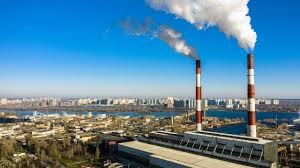Global waste incineration plants market is projected to witness a CAGR of 7.80% during the forecast period 2024-2031, growing from USD 72.95 billion in 2023 to USD 133.07 billion in 2031. The market is driven by strict environmental regulations, rapid urbanization, increasing waste generation, and a rising focus on the concept of circular economy. Governments and industries are focusing on limiting landfill usage and recovering valuable resources from waste accelerating the adoption of waste-to-energy (WtE) technology on a wider scale, solving the problem of handling waste management and supplementing energy production. An instance of this trend is the integration of waste incineration with district heating systems, which supports more sustainable waste management practices.
Rising technological advancements increase the efficiency and environmental performance in incineration plants, serving as a driving force of the market demand. Advanced technologies of emissions control, waste segregation, and optimization of processes make modern plants more sustainable. Additionally, the surge in energy demand continues to spur interest in waste-to-energy plants. Global electricity demand rose by 2.2% in 2023, which reflects strong demand for alternative sources of energy. In this regard, waste incineration plants continue to play an important role in converting waste into electricity and heating. This results in the dual benefit of waste management and simultaneous energy production, which aligns well with the global push for sustainable and efficient energy solutions. Countries like India, which has set a goal of net-zero emissions by 2070, aiming for more sustainable energy solutions amidst their rapidly growing energy demand. One approach gaining traction globally is waste-to-energy technologies, including waste incineration plants. As global energy demands rise and sustainability goals become more urgent, the role of waste incineration in energy production is likely to grow.
Furthermore, climate change mitigation efforts are further encouraging incineration as it helps in reducing methane emissions from landfills. Other growth factors include rising concerns with public health, economic development across emerging markets, and an increasing awareness of environmental concerns representative of the complete approach to modern waste management.
Urbanization and Population Drive Market Growth
Currently, over half of the world’s population is already dwelling in urban areas, which is expected to increase by around two-thirds by 2050. The rise in urban population creates an increased demand for effective waste handling. The trend is pivotal in shaping the waste incineration sector, which plays a crucial role in addressing the challenges associated with rapid urban growth.
Cities are compelled to adopt advanced waste management technologies to manage the increasing waste efficiently. Incineration involves the burning of organic residues at a very high temperature. Thus, the method has gained prominence due to its volume reduction of waste by up to 90%, thereby addressing the space challenges set by densely populated cities.
Moreover, modern incineration plants have environmental benefits such as energy recovery and reduction of landfill use. Such facilities produce electrical or heat energy out of wastes undergoing treatment, thereby contributing to energy sustainability. As urban areas expand and traditional landfill sites become increasingly less feasible due to lack of land and environmental reasons, waste incineration presents a viable alternative.
Limited Landfill Space Fuels the Demand of Waste Incineration Plants
The key driver for the global waste incineration plants market is the reduction in landfill site availability. Due to the high price of land, the conventionally used landfill sites are shrinking. Incineration, along with composting, recycling, and gasification, are new techniques for handling waste that are being increasingly implemented. Conventionally, landfill sites have been the most favored option for waste dumping. However, as the volume of waste continues to rise, landfills such as Singapore’s Semakau are projected to reach full capacity by 2035, facing severe limitations.
Additionally, factors such as landfill taxes and space available for new landfills have intensified the challenges associated with landfill waste management. As a result, the reliance on landfills is expected to decrease. This shift away from landfills, combined with the ongoing need for effective waste disposal solutions, will likely boost the incineration demand. Consequently, this shift is expected to drive the market growth for waste incineration plants.
Waste Types from Municipal to Agricultural Fuel the Market Growth
The growth of global waste incineration plants market is highly fueled by the wide range of waste types, including municipal, hazardous, medical, industrial, and agricultural. As urbanization and industrialization advance, municipal and industrial waste volume increases, creating a higher demand for effective disposal solutions such as incineration. For instance, in 2023, over 2 billion tons of municipal solid waste (MSW) were generated worldwide, with projections indicating a rise of 70% to 3.4 billion tons by 2050. This surge in waste generation drives the need for more incineration facilities.
Additionally, due to their severe health and environmental risks, hazardous and medical wastes require specialized treatment, further elevating the demand for sophisticated incineration technologies. Similarly, significant amounts of agricultural waste in farming-intensive regions bolster the need for incineration to manage large quantities of organic material. The ability of incineration to handle diverse waste types, reduce waste volume, and recover energy makes it a favored solution in the global market, thereby accelerating the expansion of the waste incineration plants market.
Europe to Dominate the Market Share
Europe is leading the global waste incineration market due to a combination of regulatory frameworks, high population density, and strategic policy shifts. In June 2022, the European Parliament approved a significant reform of the EU Emissions Trading System (EU ETS), including municipal waste incineration plants starting in 2026. The move underlines Europe’s commitment to integrate waste management into its broader climate strategy. European countries such as Germany, the United Kingdom, France, Italy, the Netherlands, and Sweden collectively account for 75% of the EU’s incineration capacity. This extensive infrastructure reflects the region’s reliance on incineration as a primary method for treating waste, driven by high population densities and limited land availability for waste disposal.
Furthermore, the increase in non-municipal waste and stringent environmental regulations have fueled the growth of the incineration market in Europe. The Circular Economy Package further reinforces the trend, with its revised legislative proposals aiming for a 65% recycling rate for municipal waste and a 75% recycling rate for packaging waste by 2030. These ambitious targets are designed to foster a circular economy, reducing reliance on landfills and enhancing waste recovery. As a result, Europe dominates the incineration market and sets a global benchmark for integrating waste management into sustainable development practices.
Future Market Scenario (2024 – 2031F)
1. The focus on improving the efficiency of energy recovery from waste incineration is expected to intensify. Innovations in converting waste-derived heat into electricity and other forms of energy are set to enhance the economic viability and sustainability of incineration plants.
2. Anticipated tightening of environmental regulations and standards for waste incineration could drive the adoption of cleaner technologies and practices.
3. The development of advanced technologies, such as plasma gasification and carbon capture and storage (CCS), is enhancing the efficiency and sustainability of waste incineration.
Report Scope
“Waste Incineration Plants Market Assessment, Opportunities and Forecast, 2017-2031F”, is a comprehensive report by Markets and Data, providing in-depth analysis and qualitative and quantitative assessment of the current state of global waste incineration plants market, industry dynamics, and challenges. The report includes market size, segmental shares, growth trends, opportunities, and forecast between 2024 and 2031. Additionally, the report profiles the leading players in the industry, mentioning their respective market share, business models, competitive intelligence, etc.
Click Here:https://www.marketsandata.com/industry-reports/waste-incineration-plants-market
About Us:
Markets and Data provides a comprehensive/ panoramic understanding of markets at global, regional, and country levels. Examine changing consumer preferences, emerging challenges, underlying trends, and growth prospects to accelerate your business strategies.
Contact
Mr. Vivek Gupta
5741 Cleveland street,
Suite 120, VA beach, VA, USA 23462
Tel: +1 (757) 343-3258
Email: [email protected]
Website: https://www.marketsandata.com




